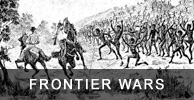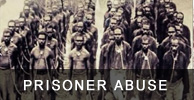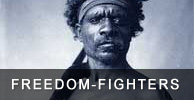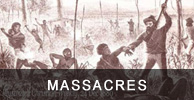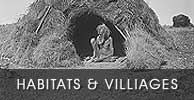Plaques unveiled: Confrontation between Wurundjeri and border police
Kath Gannaway Mountain Views 18 July 2008.
Two plaques erected at the Yarra Flats Billabongs in Yarra Glen will provide a lasting reminder of a clash of Aboriginal and white cultures which became known as the Battle of Yering.
The plaques were unveiled on Saturday, 13 January 2008 by Wurundjeri Ngurungaeta (headman) Murrundindi, 167 years after the confrontation between about 50 Wurundjeri men and border police from Melbourne.
The plaques were organised by The Friends of the Yarra Flats Billabongs in conjunction with Yarra Ranges Friends in Reconciliation and Nillumbik Reconciliation Group.
Yarra Ranges mayor Tim Heenan and councillor Jeanette McRae and Nillumbik mayor Warwick Leeson joined reconciliation members at the ceremony.
Local historian Mick Woiwood said Melbourne was very much a frontier settlement when the 50 Aboriginal men led by Jaga Jaga found themselves in what was the first serious armed confrontation with authorities.
Mr Woiwood said the men had left Melbourne on "men's business" on 12 January 1840. The incident started when they raided a vegetable garden of a settler named Anderson at what is now Warrandyte.
"When he ordered them off his land - land they probably saw as their land - a shot was fired which narrowly missed Anderson's head," Mr Woiwood said.
The men moved on to a spot near William Ryrie's Yering Station and troopers followed. In conjunction with Mr Ryrie, the police lured Jaga Jaga and some of the Wurundjeri men to the station where the confrontation took place.
"All we have today is a very sanitised report with no mention of deaths, and today no-one knows how many Wurundjeri may have fallen in that confrontation," Mr Woiwood said.
He said it was important to acknowledge the events of the past.
"Reconciliation is about acknowledging, it's not about guilt," he said.
"We can't change what has happened in the past, but we must acknowledge that it happened."
Murrundindi spoke of the importance of recognising past events and influences and working towards the future for Aboriginal people.
"I am all for reconciliation. I have two beautiful cultures - Aboriginal and Scottish," he said. "My generation, we are getting it a bit easier than in the past. We have people like you helping us get this message out there."
Murrundindi said at the same time as looking back, it was important to help younger indigenous people, many of whom he said struggle with their Aboriginality.
Mountain Views, Victoria 18 July 2008.
One of the oddest things about Yering Station, established in 1838 by overlanders coming down from the Monaro high plains, is that the first whitefella born in the Upper Yarra area became the famous novelist, Joseph Furphy. His older brother, John went on to build the 'furphy water tank'.
Before the establishment of Corunderrk Mission, Barak was employed as a native policeman elsewhere.
Joseph Furphy was born in Yering, and was seven when his family moved to Kangaroo Ground, and nine when they left the Yarra Valley and moved to Kyneton. So most of Joseph's life in the Yarra Valley was living on Yering Station where his father was the gardener. Something doesn't add up here.
Joseph Furphy and Genocide National Observer Winter 2004
Dr. Geoffrey Partington
For half a century after his death in 1912 Joseph Furphy, better known during his lifetime as "Tom Collins", was highly esteemed by Australians interested in history and literature. In particular, Furphy was admired on the political Left. In 1937 Miles Franklin described his best work, Such Is Life, as "so much more than a novel . . . it is our Don Quixote, our Les Miserables, our Moby Dick, our Vanity Fair". She added, "By his attitude towards it any literary Australian betrays whether he lives in a state of Australian grace or in one of mere mental colonialism." Franklin enthused that Furphy's creed was the brotherhood of men, as taught by Christ, and to be put into effect by State Socialism.
Vance Palmer praised Furphy's "robust egalitarianism", radical populism, and anti-authoritarianism, and found in Furphy's bullockies "a passion for social equality" among "the men who pioneered unionism". Lloyd Ross, son of the proprietor of the Broken Hill Barrier Truth who first published Furphy's Rigby's Romance, thought its strength was that "the ethical case for socialism is blended with the rich deep humour of an open-air Australian": it was "propaganda for socialism woven into a series of short stories". Ian Turner praised Furphy for his dedication to the revolutionary proletariat and the socialist future, and for his belief that "the individual is powerless to determine his own destiny", since "collective humanity holds the key to the kingdom of God on earth". J.K. Ewers commended Furphy, not only as a socialist and a republican, but also as an advocate of the "common humanity of the Slav and the Mongol".
When Meanjin first appeared in 1940, it regularly featured "Letters to Tom Collins". Contributors included Kate Baker, Nettie Palmer, Kylie Tennant, Jim Devaney, James Duhig, John McKellar and Manning Clark. James Duhig, Professor of Literature in the University of Queensland, advised Furphy's shade:
"Creative artists should be an integral part of social evolution, as in Russia, where they do their work as a whole-time job, and are not in the intervals of being exploited by Mercantile, Political and Military Interests."
Manning Clark, contributing in 1943 from the Geelong Grammar School staff room, criticised Furphy for failing during his many years on the track to notice the vile effects of the presence of the White Man on the land. According to Clark, Furphy was blind to the way in which white men "treated her as a harlot, frequently raped her for her wealth - wool, gold, wheat". Many wretched colonists stuck spades into Mother Earth and grazed sheep on her! However, Clarke forgave Furphy because he and Henry Lawson had "almost canonised the word 'mate'".
In an early 1955 Overland number the radical literary critic, A.A. Phillips, claimed that "no richer, more vigorous novel than Such is Life came from any English or American publishing-house during the period" of its writing. Ian Milner wrote a "Letter to Tom Collins" in 1957 from exile in Prague, to commend Furphy's "invincible conviction that the coming New Order of socialism was destined to fulfil the moral purposes of man", although, unfortunately, Australia had fallen behind Czechoslovakia and the other "People's Democracies" in that onward march.
Furphy and Aborigines
Furphy was born in 1843 in rural Victoria into an Irish Protestant family which had only recently immigrated. He knew many Aborigines well as a boy and later as a bullocky. He wrote that the Aborigines of the Upper Yarra, "disturbed by no aspirations, and governed by tradition alone", had "undisputed possession of a tribal heritage unsurpassed in all resources that conduce to physical welfare" and a moral temperament which was "genial, generous and magnanimous." Physically they were "athletes incredibly expert in bushcraft; and the women were comely". Furphy attributed to Aborigines "undeniable brain-power" that had enabled pre-historic Aborigines to reach "a degree beyond that of our own lineal forefathers" and recalled the great prowess with spears of Aboriginal men he had known on the Upper Yarra in his boyhood.
In Such Is Life there is a "lost child" episode of the type common in nineteenth century Australian fiction, and in real life as well, and it is an elderly Aboriginal woman who comes closest to finding the missing girl. At Runnymede Station, the Aboriginal stockman, Toby, has racial pride and claims "Why, properly speaking, I own this here (adj.) country as fur as the eye can reach". On the other hand Toby also identifies with much of White Australia, including a loyalty to New South Wales in sporting contests. He has a running battle with an Irish storekeeper Moriarty, in which Irish-jokes and Aborigine-insults are traded against each other, with Toby generally gaining the upper hand. Overall Furphy's depiction of Toby is attractive and positive.
These points do little to undermine the admiration of Furphy displayed on the Australian Left in earlier years. However, many other passages in Furphy's works may discomfort some current voices that urge us still to seek "the light on the hill". Furphy feared that Aborigines' lack of adaptability to the new and their attachment to magic and superstition might lead to their extinction. An Aboriginal friend of his youth, Sam, had been killed by an enemy, who tore out his kidney fat while Sam was still alive. One of Furphy's favourite bushmen, Barefooted Bob, relates that an Aboriginal group he had met were "jist finishing" off a Chinese, with "an' another Chow with his legs broke, keepin' fresh for when he was wanted".
There is a lively encounter in The Buln-buln and the Brolga between novelist Lilian Falkland-Pritchard and Barefooted Bob. Mrs. Falkland-Pritchard, a precursor of twentieth century progressivism, is filled with reverence for Aboriginal customs. She argues that, "in spite of the paramount significance of local designations - or, perhaps because of it - the map of this young land is already defaced by ugly and incongruous names, transplanted from the other side of the world". White deeds have been worse than white names in her view. She asks Bob, "aren't the poor creatures often treated cruelly by new settlers?" and suggests, "we boast of our civilisation but the trail of the serpent is over it all". Bob replies:
"I never studied blackfellers. In fact, missus, to tell you the truth, they don't bother much about manners and customs, so there ain't much to study. Anyway, they're dyin' out by degrees, so the time ain't fur off when it won't matter sixpence what their manners and customs was like."
When invited by Mrs. Pritchard for further details, Bob replies, "they smoke when they can git tobacker; an' they booze when they can git grog; an' they got no shame in regard o' cadgin', an' very little shame any other way". Bob praises Aboriginal women because "they won't part with their kids at no price", but condemns men who sell their womenfolk for "thirty bob cash an' a couple of notes in second-hand trucks".
Not only did Furphy fail to appreciate Aboriginal customs in the way that current doctrine requires today, but he did not even notice the genocide that Robert Manne and Ray Gaita, among other authorities with professedly deep roots in the Australian past, are certain was rampant around him. Furphy claimed that "from the first contact of black and white races on the Yarra a mutual good-feeling prevailed", largely because of changes in white opinion brought about by the abolition of slavery. Was Furphy stupid or engaged in a wicked cover-up of evil deeds of his fellow bullockies, swagmen and selectors? Or could it be that his witness was a truthful one and that Manne and Gaita and their followers are wrong?
Furphy would have been delighted that many Aborigines transcended the destructive and self-destructive ways he feared might lead to their extinction, and that their numbers have now been increasing rapidly for several generations. But he would have opposed policies which set Aboriginal interests against those of Australians as a whole. In particular, he would trounce with his accustomed vigour those who so hate and loathe the nineteenth century Australia created by the British and Irish that they seek to brand them as genocidal. Our current politically correct intellectuals must make up their minds about Furphy, Henry Lawson and pretty well the whole of the Australian Labor movement during its first century and more. Were they wicked racists whom we must repudiate, together with the Southern Cross as well as the Union Jack? Or were they overwhelmingly fair-minded men and women who wanted to share with Australia's indigenous peoples the benefits of modernity, but who found it very difficult to do so?
National Observer No. 61 - Winter 2004

